Observatory Gallery
| Title | Image |
|---|---|
|
EXES Instrument
Caption
The Echelon-Cross-Echelle Spectrograph (EXES) is used for high-resolution spectroscopy at mid-infrared wavelengths (4.5 to 28.3 microns) to study molecular gas in dormant clouds and protostellar disks. Researchers at the University of California, Davis completed this instrument.
Credits
NASA/SOFIA/EXES/Matthew Richter
|
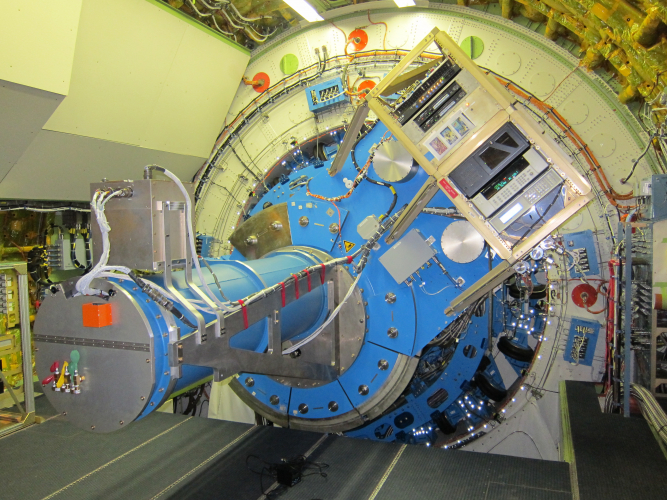
|
|
HIPO Instrument
Caption
The High Speed Imaging Photometer for Occultations (HIPO) was, as its name implies, developed for observing stellar occultations – when an object passes in front of a distant star and its shadow is observable from Earth. HIPO recorded SOFIA's first Pluto Occultation on June 22/23, 2011. The instrument collects data from 0.3 to 1.1 microns and can be co-mounted with the FLITECAM instrument. A team from the Lowell Observatory, Flagstaff, Ariz., developed HIPO.
Credits
NASA/SOFIA
|
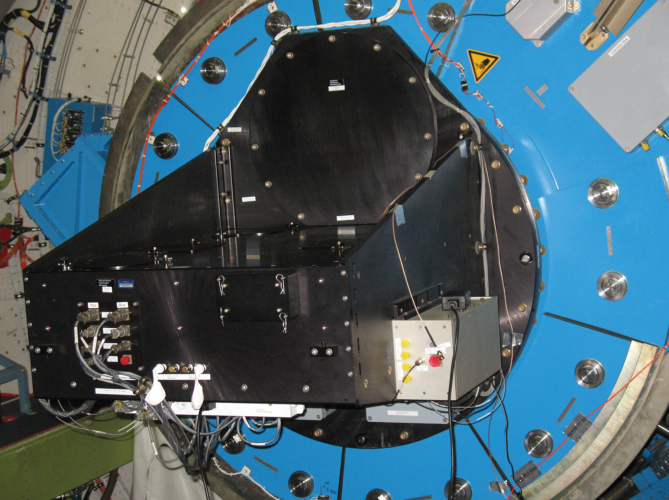
|
|
FLITECAM Instrument
Caption
FLITECAM, the First Light Infrared Test Experiment Camera, captures data at 12 frames per second in the 1-5 micron wavelength range and is also capable of spectroscopy from 1-5.5 microns. The instrument was developed by a team from the University of California, Los Angeles. This image shows the FLITECAM instrument co-mounted with the High Speed Imaging Photometer for Occultations (HIPO) to provide simultaneous optical and near-infrared imaging.
Credits
NASA/SOFIA
|
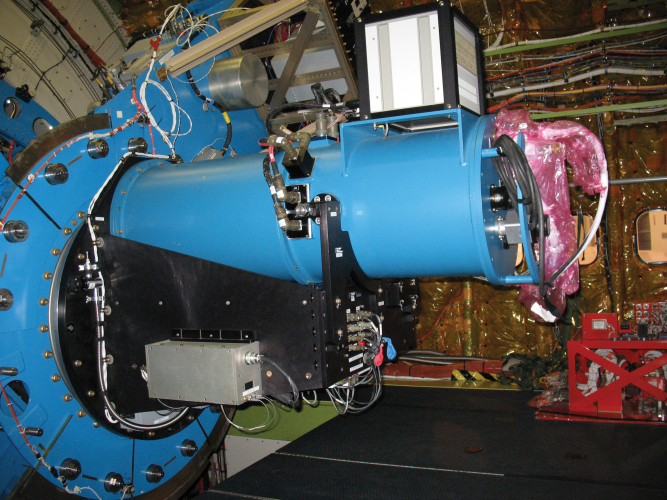
|
|
FIFI-LS Instrument
Caption
The Field Imaging Far Infrared Line Spectrometer (FIFI-LS) is a two-channel imaging spectrometer that is used to study the interstellar medium where matter from old stars is recycled into new stars. This instrument takes both images and medium resolution spectra in the 50-125 micron range and the 100-200 micron range simultaneously. FIFI-LS was developed by a team from the University of Stuttgart, Germany.
Credits
NASA/SOFIA/USRA/Greg Perryman
|
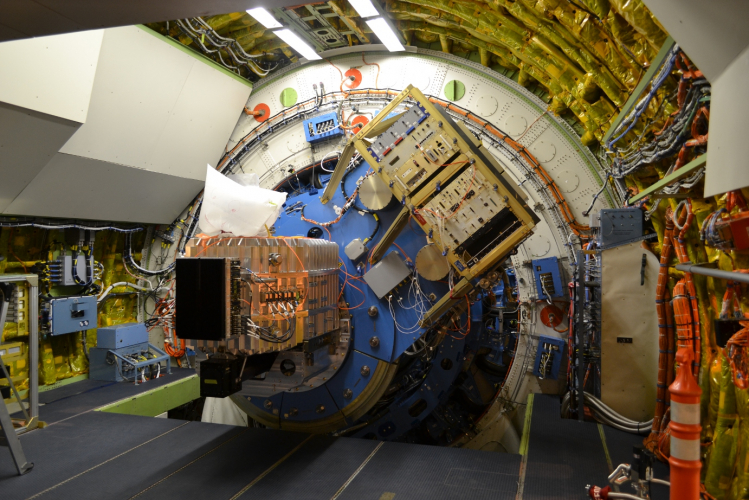
|
|
SOFIA Southern Deployment patch
Caption
In July 2013, for the first time, NASA’s airborne observatory SOFIA, the Stratospheric Observatory for Infrared Astronomy, was deployed to the southern hemisphere. Scientists made observations of celestial objects in the southern sky, flying from the U.S. scientific missions base in Christchurch, New Zealand. Scientific targets during SOFIA’s southern deployment included the Large and Small Magellanic Clouds, as well as objects in the central regions of the Milky Way Galaxy. The two Magellanic Clouds, dwarf galaxies relatively near our galaxy, are easily visible with the naked eye in the southern sky. The clouds are named after explorer Ferdinand Magellan, one of the first Europeans to report seeing them. Other targets include objects in or near the Milky Way’s center, which is much more easily observed from the southern hemisphere than from the north. On the patch, the "O" in SOFIA marks the southern deployment base at Christchurch and the Southern Cross Constellation, visible only from the southern hemisphere, is shown to the left.
Credits
SOFIA/ASP
|
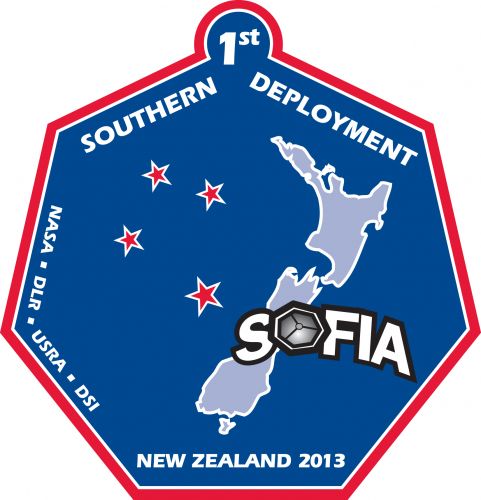
|
|
NASA SOFIA air-to-air
Caption
With the large door over its 2.5-meter German-built telescope wide open, NASA's Stratospheric Observatory for Infrared Astronomy 747SP aircraft soars over Southern California's high desert. SOFIA makes astronomical observations between 39,000 and 45,000 feet altitude, typically flying 10 hours per flight.
Credits
NASA/Jim Ross
|
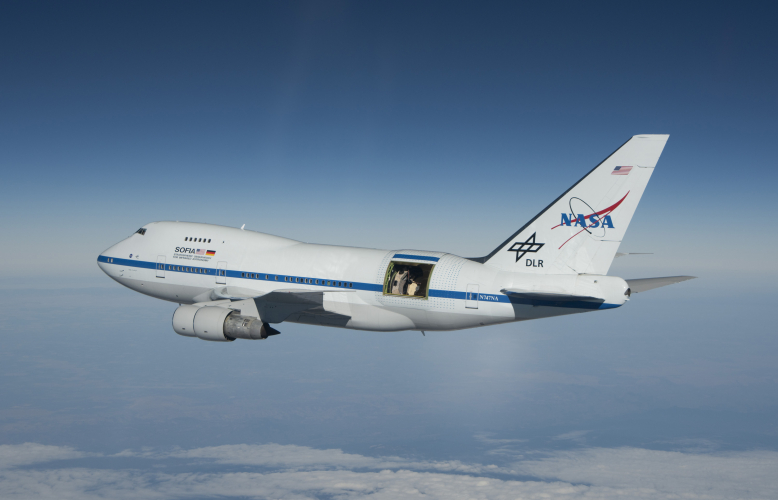
|
|
GREAT Instrument Cryo Loading
Caption
Christophe Risacher (left) and Karl Jacobs cool the GREAT spectrometer with a liquid cryogen in preparation for a flight of the SOFIA airborne observatory from Christchurch, New Zealand to study Southern Hemisphere celestial objects.
Credits
NASA/Carla Thomas
|
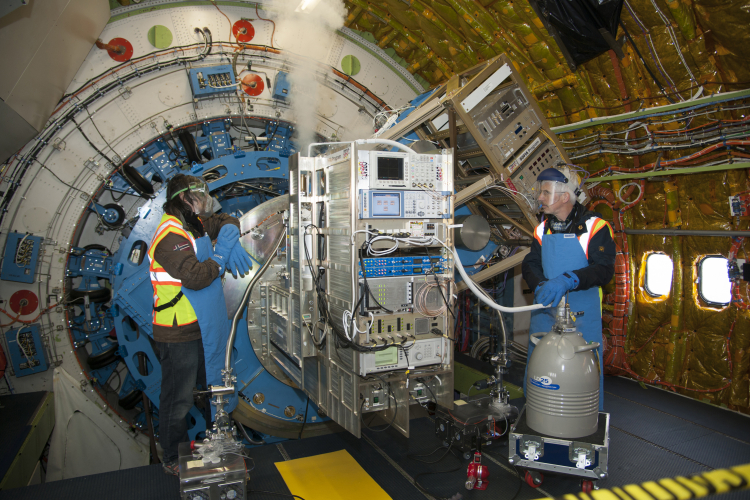
|
|
SOFIA's cockpit after avionics upgrade
Caption
The cockpit of NASA's Stratospheric Observatory for Infrared Astronomy (SOFIA) received an avionics modernization upgrade in 2012 that replaced the outdated avionics suite with new avionics systems. Most of the analog gauges and associated hardware were replaced by digital, computer-based systems with multi-functional "glass cockpit" displays.
Credits
NASA/Tom Tschida
|
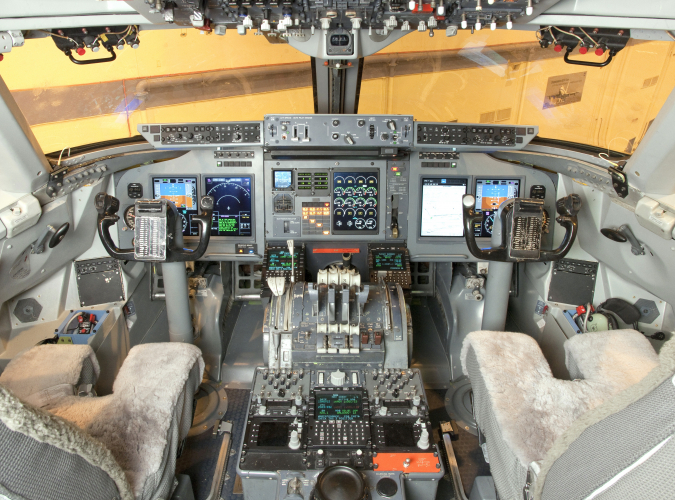
|
|
FLIPO instrument
Caption
The High-speed Imaging Photometer for Occultations (HIPO) sits closest to the telescope when co-mounted with FLITECAM, as shown here. HIPO collects ultraviolet, visible, and infrared light with wavelengths between 0.3 and 1.1 microns, and is SOFIA’s main image quality test instrument.
Credits
NASA/SOFIA/N. Veronico
|
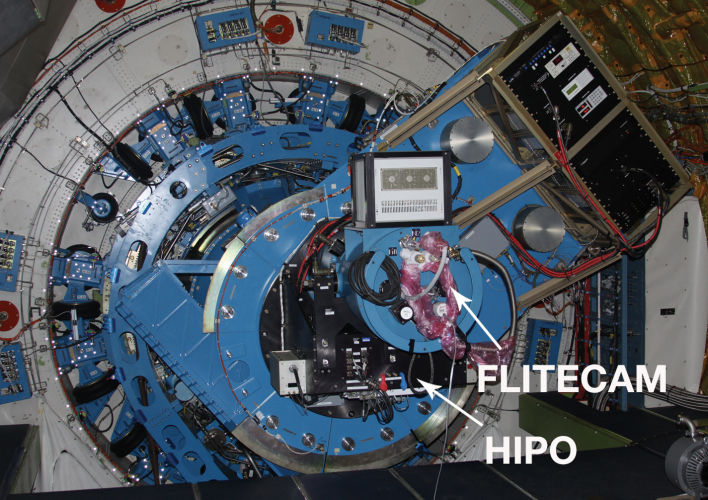
|
|
FLIPO instrument
Caption
The High-speed Imaging Photometer for Occultations (HIPO) sits closest to the telescope when co-mounted with FLITECAM, as shown here. HIPO collects ultraviolet, visible, and infrared light with wavelengths between 0.3 and 1.1 microns, and is SOFIA’s main image quality test instrument.
Credits
NASA/SOFIA/N. Veronico
|
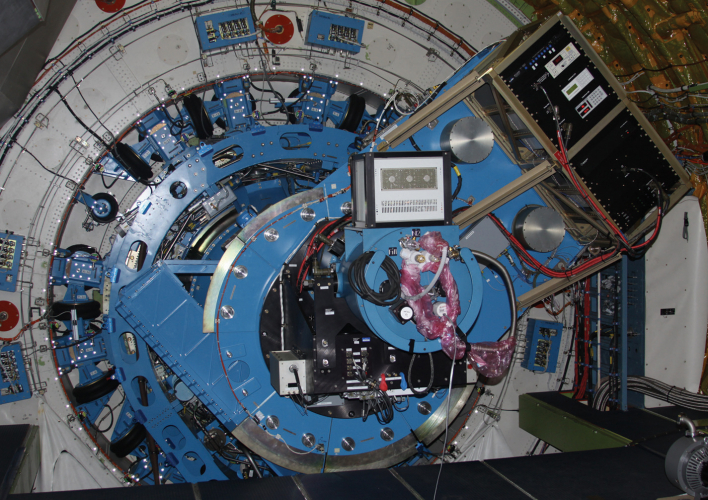
|
|
SOFIA Trans-Atlantic patch
Caption
This patch was flown on the first trans-Atlantic flight of NASA’s Stratospheric Observatory For Infrared Astronomy (SOFIA), which took place on the night of Sept. 15/16, 2011. The flight departed from the Dryden Aircraft Operations Facility (DAOF) in Palmdale, California, and landed at the Cologne/Bonn Airport, home of the German Aerospace Agency. During this flight, science was collected by the German Receiver for Astronomy at Terahertz Frequencies (GREAT), a spectrometer developed by a team from the Max-Planck-Institut für Radioastronomie, Bonn, Germany. The patch depicts SOFIA above a stylized map of the event, surrounded by flags of the United States and the Federal Republic of Germany.
Credits
SOFIA/ASP
|
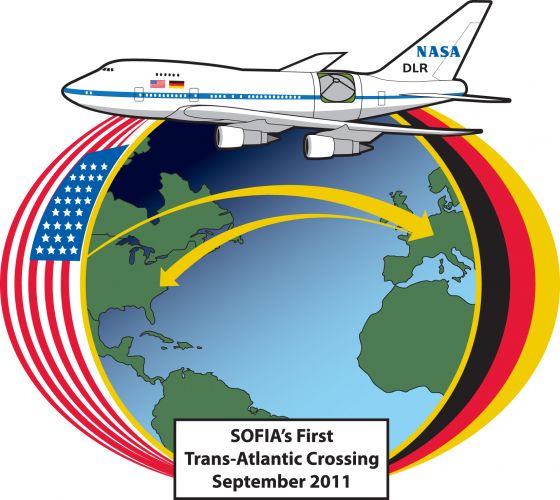
|
|
SOFIA Pluto Occultation patch
Caption
This patch commemorates the Pluto Occultation science mission by NASA's Stratospheric Observatory for Infrared Astronomy (SOFIA), which took place on the night of June 22/23, 2011. The patch shows SOFIA more than 1,800 miles from the U.S. west coast as Pluto's shadow raced across the Pacific Ocean at more than 53,000 mph. The flight departed from, and returned to the Dryden Aircraft Operations Facility (DAOF) in Palmdale, California. During this flight, Pluto was observed passing in front of a distant star using the High-Speed Imaging Photometer for Occultations (HIPO), developed by a team of researchers from the Lowell Observatory in Flagstaff, Ariz., and the Fast Diagnostic Camera developed by scientists at the Deutsches SOFIA Institute (DSI), University, Stuttgart, Germany. In addition to the parties mentioned above, researchers at the Massachusetts Institute of Technology, the NASA Planetary Astronomy Program, the National Science Foundation, and the U.S. Naval Observatory (Flagstaff Station) were instrumental in the success of this observation.
Credits
SOFIA/ASP
|
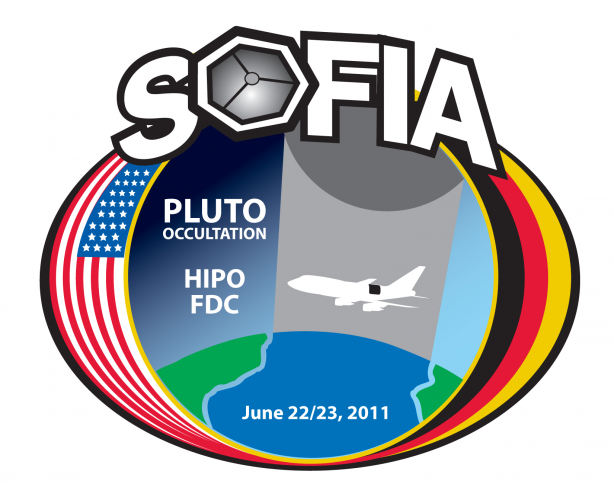
|
|
SOFIA Telescope and Mirror Close-up
Caption
The NASA logo on the Armstrong Flight Research Center's Bldg. 703 in Palmdale, Calif., is reflected in the 2.5-meter primary mirror of the SOFIA telescope.
Credits
NASA/Tom Tschida
|
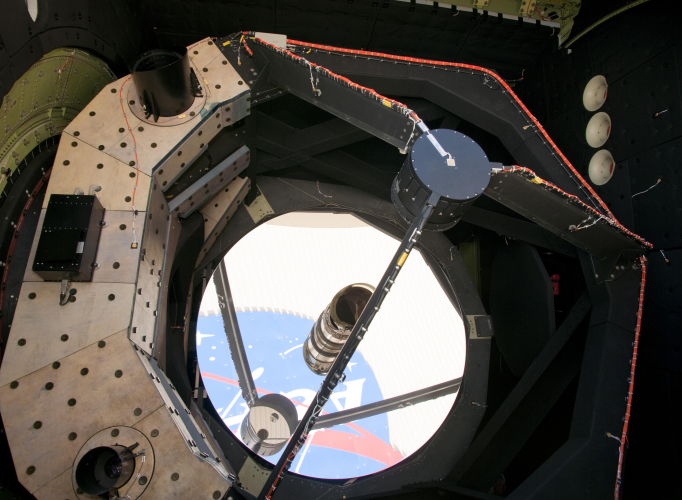
|
|
FORCAST instrument on SOFIA telescope
Caption
Cornell University's Faint Object Infrared Camera for the SOFIA Telescope, or FORCAST, is mounted on the telescope before a science flight.
Credits
NASA/Tom Tschida
|
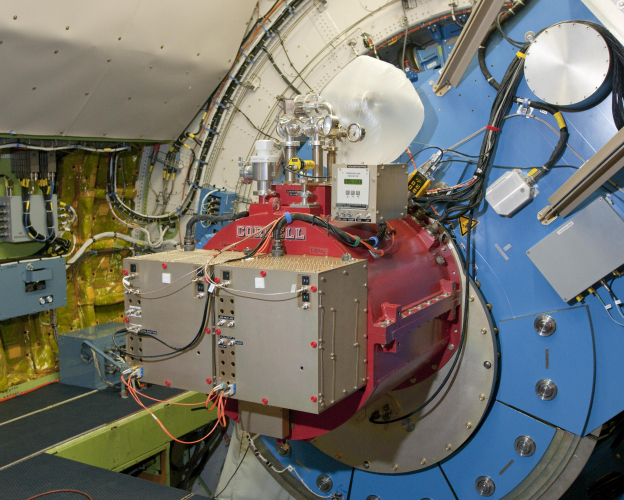
|
|
SOFIA Telescope and Cavity
Caption
Faint specks of starlight are reflected by the 100-inch (2.5-meter) primary mirror on NASA's Stratospheric Observatory for Infrared Astronomy (SOFIA) during ground testing of the Faint Object Infrared Camera for the SOFIA Telescope (FORCAST).
Credits
NASA/Tom Tschida
|
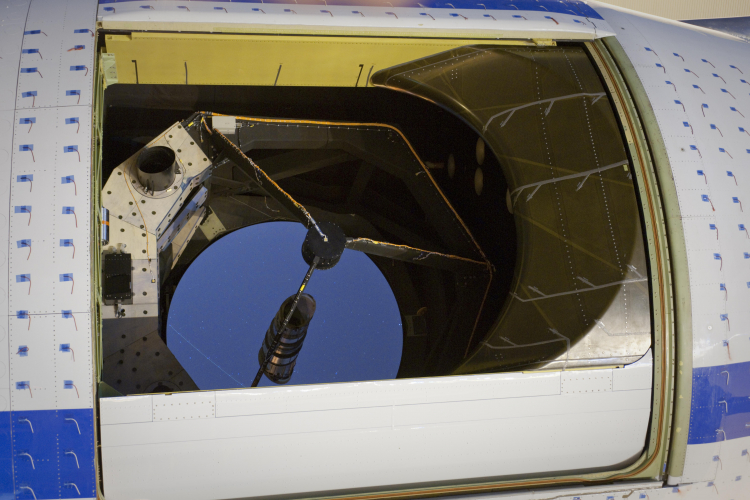
|
|
SOFIA Mission patch
Caption
NASA’s new airborne observatory, SOFIA, is a Boeing 747SP tted with a 17-ton, 100-inch (2.5-meter) diameter infrared telescope. The observatory operates between 39,000 feet and 45,000 feet (12 and 14 km). Operated jointly by NASA and the German Aerospace Center (DLR), SOFIA is a world-class observatory that will complement the Hubble, Herschel and James Webb space telescopes and major Earth-based telescopes.
Credits
NASA/USRA/David Faust
|
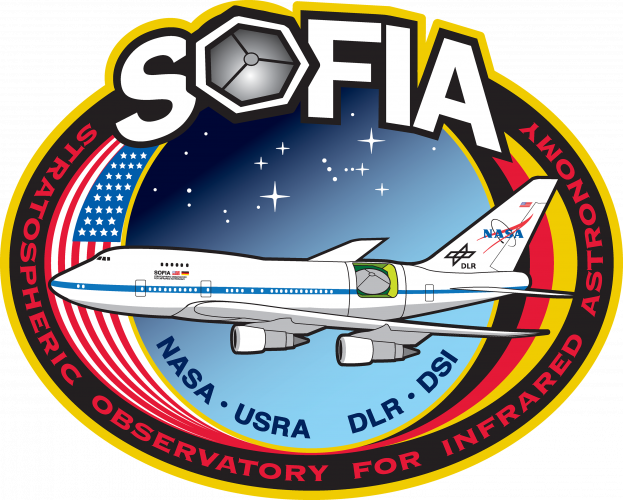
|
|
SOFIA air-to-air with aerodynamic tufts
Caption
With its primary mirror covered by a protective sun shade, the German-built infrared telescope nestled in its cavity in the rear fuselage of NASA's SOFIA flying observatory is easily visible in this close-up image taken during a test flight. The small blue lines surrounding the telescope cavity are aerodynamic tufts to visibly show how air flows over the cavity in different flight attitudes.
Credits
NASA/Jim Ross
|
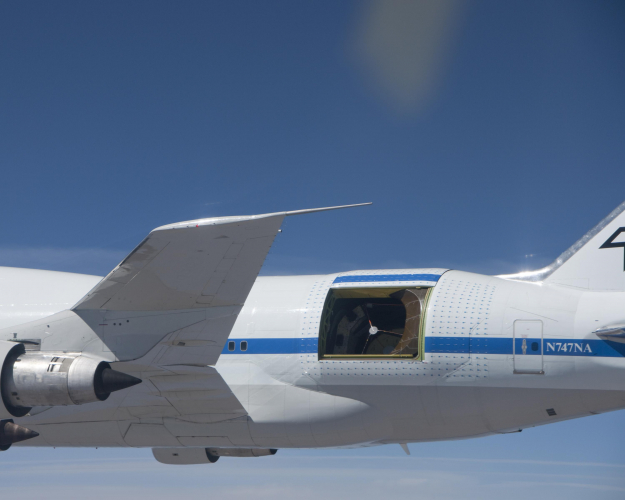
|
|
SOFIA air-to-air over the Sierra Nevada Mountains
Caption
With the sliding door over its 17-ton infrared telescope wide open, NASA's Stratospheric Observatory for Infrared Astronomy – or SOFIA – soars over California's snow-covered Southern Sierras on a test flight.
Credits
NASA/Jim Ross
|
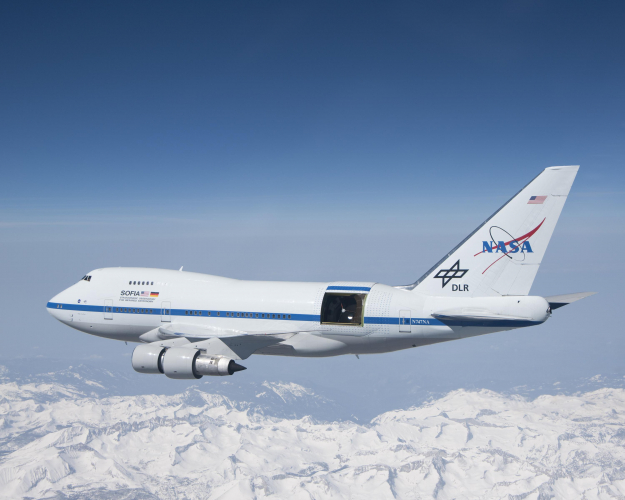
|
|
SOFIA and Kuiper Airborne Observatory at NASA Ames
Caption
NASA's new SOFIA observatory shared the ramp with its predecessor, the now-retired Kuiper Airborne Observatory, during open house at NASA Ames Research Center.
Credits
NASA/Eric James
|
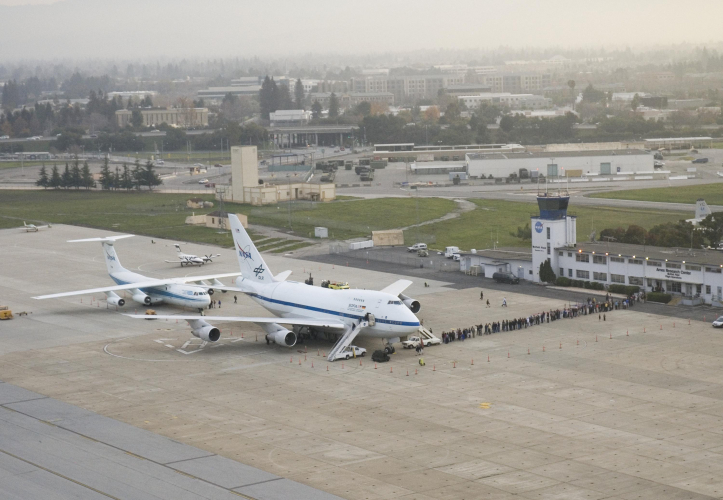
|
|
Erik Lindbergh Christens SOFIA
Caption
Erik Lindbergh, grandson of famed aviator Charles Lindbergh, yanks the bunting to reveal the Clipper Lindbergh name on NASA's SOFIA 747SP on June 27, 2007.
Credits
NASA/Tony Landis
|
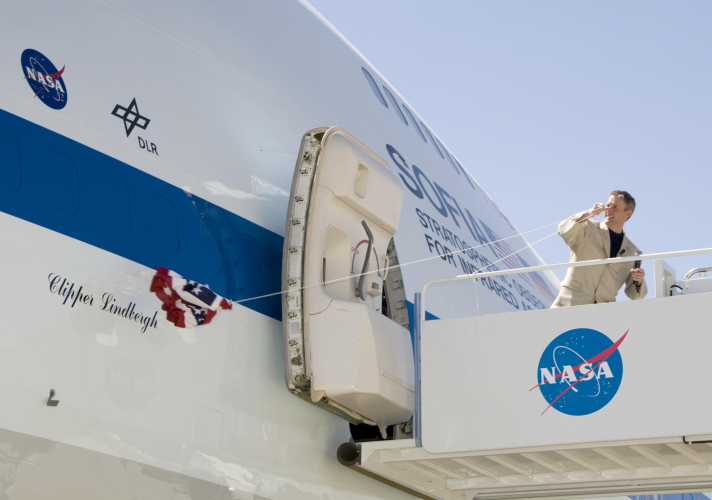
|
|
Erik Lindbergh Christens SOFIA May 2007
Caption
Erik Lindbergh christens NASA's 747 Clipper Lindbergh with a special commemorative concoction representing local, NASA, and industry partners.
Credits
NASA/Tom Tschida
|
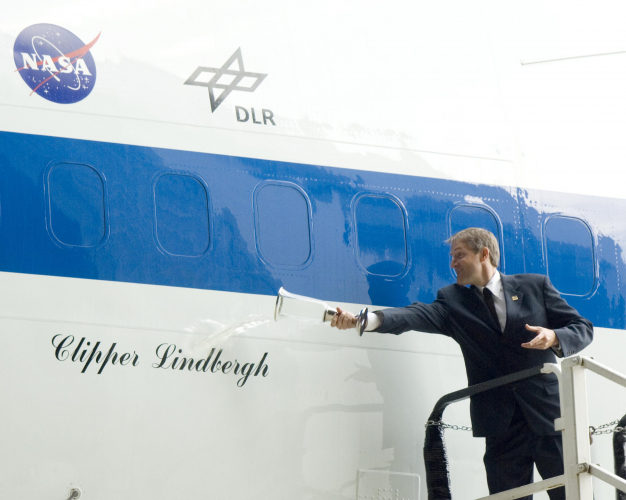
|
|
SOFIA telescope without instrument installed
Caption
A technician examines the instrument mounting structure and bulkhead of the German-built infrared telescope installed in NASA's SOFIA airborne observatory. Note that there is no instrument installed on the telescope, which mounts where the yellow ring is located in the center of the photograph.
Credits
NASA/Tony Landis
|
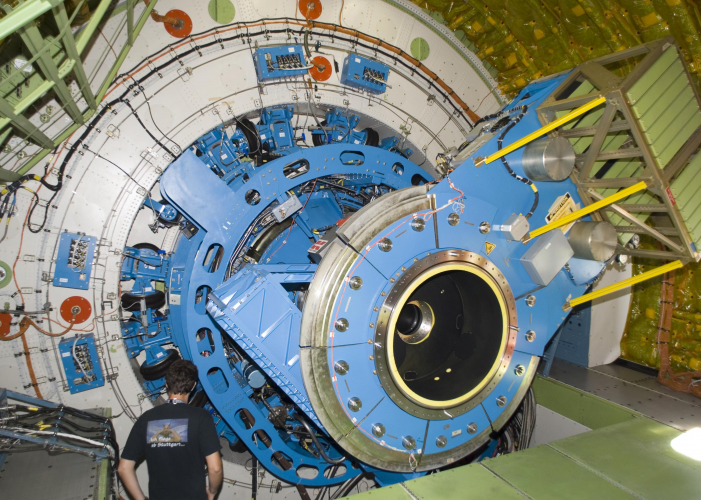
|
|
SOFIA modifications nearing completion
Caption
A rotating external door (white) was installed over the telescope cavity in the rear fuselage of NASA's SOFIA Boeing 747SP during modifications in Waco, Texas. Anodized green area shows extent of SOFIA's external fuselage modifications.
Credits
L-3 Communications, Platform Integration
|
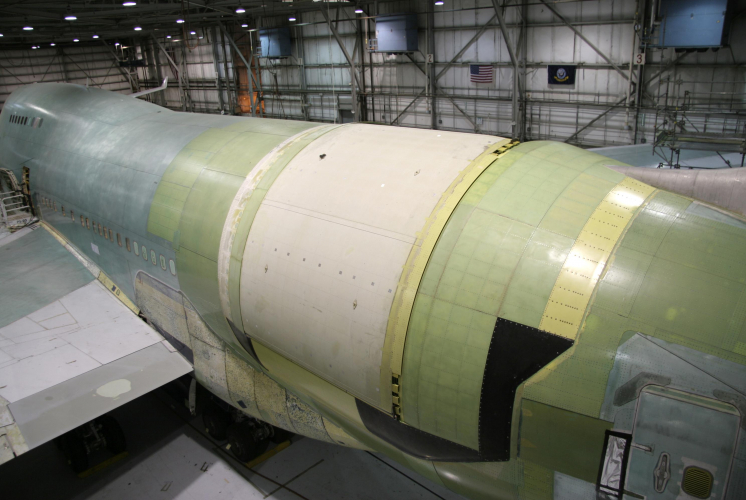
|